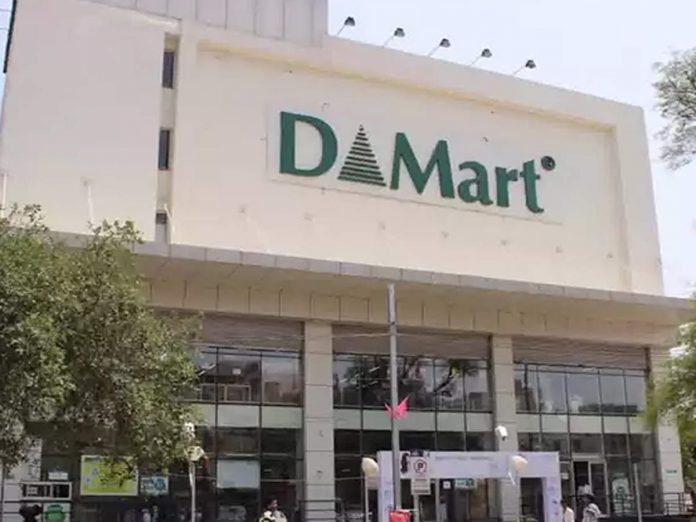This article has been written by Nehal Misra, a student at Nirma University, Ahmedabad. In this article, she discusses the insights related to digital brand management and the DMart case.
Table of Contents
Introduction
Today, the Indian retail industry is undergoing transition, bringing with it a lot of transformations in the retail business. The shoppers enjoy the privilege of shopping for the goods and services they require to meet their expectations in a variety of formats. Retail comes from the French word retailer, meaning “cutting off and dividing.” According to Tailoring, it was first recorded as a noun in French with the meaning of a “sale in small quantities.” For retail, its literal meaning was to “cut off, shred, paring” According to Gilbert, D, it is a company that directs its marketing efforts to satisfy the final consumer by organizing the sale of goods and services as a means of distribution. Retailing was never as it has been seen today.
It is believed that Aristide Boucicaut founded the first true department store in the world in Paris in 1852, and was named Bon Marche. Retailers perform various functions while selling their products and services to their customers and ultimately allows the products to be successfully sold. The emergence of organized retail in India dates back to the pre-independence era when established business houses in the country, mostly textile majors, ventured into the retail arena through outlets owned by companies or franchisees. The Indian retail scenario underwent a dramatic shift from the unorganized to the organized. The organized players are familiar names today and have become the moguls of the Indian retail industry.
Digital Brand Management
Digital brand management takes traditional brand management principles and applies them across multiple digital media to customer experiences. The focus here is often on direct customer interaction – where social media, apps, and websites allow your business to engage with customers directly like never before. That’s why digital brand management is truly a direct marketing evolution: it includes everything you need to do about how your customer communicates directly about your brand through digital media, from landing pages and apps to your entire online content strategy. Effective businesses should use social media, online content, and mobile apps as part of a successful digital brand marketing strategy to broaden their brand recognition, connect with consumers and drive market penetration. Digital brand management is essentially an amalgamation of policies that directly or indirectly affect the way your customer interacts with your online brands. This includes your landing pages, apps, social media engagement, blog marketing, PPC, and anything done on the digital medium.
Digital brand management policy
In the offline section, brand management is fairly straightforward, where approval for brochures, flyers, and print ads is all performed by one centralized authority who is mainly the brand manager. In the case of digital brand management, a number of key business components are outsourced to third party agencies, such as web design, PPC advertising, and social media marketing. It is important for a brand to have a unique brand management policy that applies to all marketing channels-offline as well as online. There are two major brand marketing areas one has to look at – concept and positioning. The design factors include essentially all the marketing materials which originate from the digital accounts of the organization. This includes the look and experience of your social media accounts on the landing pages, ad copies, and even the cover photo. Positioning is the actual communication transmitted via digital media. Besides the ad copy text, pictures, and taglines used in the digital media, placement that also includes the tone and tenor of the tweets and email messages sent from the company’s account.
Communicating the digital brand management strategy
Perhaps the most important component of digital brand management is stakeholder communication. In any organization, digital campaigns are often decentralized and are typically handled by external media agencies specializing in specific channels. Brands are encouraged to set up a one-on-one meeting with your account manager to debrief them on your brand management strategy. This includes a complete transfer of knowledge on the universal brand philosophy as well as an explanation of the brand strategy specific to the marketing channel the agency is handling.
The limitations of digital brand management
The limited wriggle-room that comes with the latter is one of the crucial differentiators between offline and digital brand management strategies. In the offline world, brands have complete control over the materials from which they print, the platforms from which they distribute their products, and the terminology used in the communication. With digital label management, this may not always be the case. While brands can monitor absolutely what’s going on their landing page, they can’t affect what the customer sees. A big chunk of digital brand management is also executed over third-party platforms with proprietary branding and policies. Digital brand management is evolving into a much-needed component of overall brand strategy for a company. Given the various stakeholders involved here, businesses need to establish a well-studied, comprehensive approach that can meet all of their digital branding objectives without compromising their overall branding strategies.
Retail in India
Evolution
With disruptive changes taking place in the global economy and the growing importance of the company’s 24/7 service, the retail industry has been experiencing a worldwide paradigm shift. Today’s world has turned into a global village; consumerism has a huge impact on the contemporary retail business, and technological advances have created opportunities and challenges for the retail industry as well. With the advent of the internet, retail industry growth was impressive due to the benefits of economies of scale and business expansion across geographic boundaries at B2B (Business to Business) and B2C (Business to Consumer) levels.
Several studies have shown the Indian Retail Market is one of the world’s leading emerging markets. The retail sector is one of the pillars for the Indian economy, leading to a growth rate of about 10% of total GDP and about 8% of total employment. The Indian Retail industry is expected to have a bright future and provides plenty of opportunities for growth and development. Moreover, studies suggest that there has been a transition from traditional retail formats to a more organized form of retailing with changes in consumer buying preferences, demographic composition, and increasing preference for mall culture.
Factors responsible for the growth of the Retail Sector in India
Retail Industry, one of the fastest-changing and vibrant sectors, has contributed to our country’s economic growth. Within a very short span of time, the Indian retail sector has become the world’s most lucrative, growing retail market. Healthy economic growth, changing demographic profile, rising disposable incomes, changing consumer tastes and preferences are some of the key drivers of growth in India’s organized retail market.
Some of the factors responsible for the growth of organized retailing are as under:
- Growth of middle-class consumers:
- Increase in the number of working women:
- Value for money:
- Emerging rural market:
- The entry of the corporate sector:
- The entry of foreign retailers:
- Technological impact:
- The rise in income:
- Media explosion:
- Rise of consumerism:
Food retail in India
The top three product groups that are higher for global retail sales are food, clothing, and furniture. Given its crucial role in fulfilling one of the basic needs of every human being i.e. food, grocery retailing has the highest sales. Much of this growth will be driven by an inflationary price rise, and the balance of demand growth will be driven by increasing population, rising incomes and higher food spending, and lastly, urbanization, which is changing food habits. India’s Food and Grocery retail sector offers one of the greatest business prospects and dominates the industry over the next five years. In their report, Lakshmi Narayana described factors such as location convenience, goodwill, credit facility, trading, loose goods, convenient timing, and home delivery to attract customers to unorganized retail. “Customized services” and “easy goods return/exchange facilities” also drive a customer to Kirana stores, while “product selection,” “efficient store-management” and “value-enhancing services” attract customers to modern retailers. However, local Kirana stores and street hawkers will still dominate the food and grocery market with a 90 % plus share, even in 2025. The buying decisions of consumers are informed by the knowledge which is available to them. While making buying decisions consumers consider the known brands and consider product experiences they have had.
The DMart case study
DMart is a one-stop retail chain that strives to deliver a wide variety of simple home and personal items to its customers under one roof. Each DMart store stocks home utilities products-including food, toiletries, beauty products, clothing, kitchenware, bed and bath linen, home appliances, and more at competitive prices that our customers appreciate. Its core aim is to offer good products to customers at a great value. Mr. Radhakishan Damani and his family started DMart to address the rising needs of the Indian population. DMart today has a well-established presence in 214 locations across Maharashtra, Gujarat, Andhra Pradesh, Madhya Pradesh, Karnataka, Telangana, Chhattisgarh, NCR, Tamil Nadu, Punjab, and Rajasthan. Since the launch of its first store in Powai, with the mission to be the lowest priced retailer in the regions to operate, the business continues to grow with new locations planned in more cities.
Avenue Supermarts Ltd. (ASL) owns and operates the DMart Stores supermarket chain. The firm is headquartered in Mumbai. I bet you are having a hard time recalling anything legendary about D-Mart. But I don’t mind anything. No advertising. No schemes. No loyalty programs. No ‘Sale days’ either – at least no ‘Sabse Saste Din’ or ‘Big Billion Days’ equivalent. Yet, this is one retail chain whose market cap is higher than both Future Retail and Aditya Birla Fashion’s combined market capitalization. And it has never closed, shifted, or shut down a store in its 15 years of operations. It’s famously said in the retail business that success depends on three factors: location, location, and location. However, 3 alternative approaches to success are closer to reality: Lowest Prices, Best Quality, and Widest Range. As markets grow, players tend to gravitate to one of those 3 options, because going after 2 or all 3 factors in many ways makes them vulnerable. Price is the location where D-Mart operates. Consumers are offered a minimum 3 % discount off their shelf on each product, and in some cases, the discount is as much as 10%t off MRP.
Product:
A combination of profit margins and inventory turnover drives rentability in retail. With price as a differentiator, profit margins are squeezed on individual items (its gross margin is only about half of its competitors). D-Mart, therefore, operates in small categories of goods – primarily food and grocery. Most other retail chains have also expanded into high-end segments, but D-Mart has stayed away from them to keep stocks low and stock turnover high (inventory turnover was approximately 11.6 times a year during 2012-2016, i.e. stock was purchased and sold 11.6 times a year on average). Likewise, it does not have private labels, contrary to other chains, nor does it offer a wide selection of brands in each segment. The emphasis is clear: Everyday consumer goods + only known brands + limited options = ultra-fast turnover. Behind the scenes, this quick turnover is what it uses to negotiate better prices with wholesalers and firms. This does not, however, mean arm-twisting suppliers. The payment is arranged fortnightly to most suppliers. This is one of the shortest lending periods in any industry.
Promotion:
Like the local grocery store seldom needs to advertise beyond simply announcing its existence, D-Mart mostly advertises about its store openings, and sometimes about prices. Also, because the store’s combination of product lines and prices can create daily visits, advertising has a small part to play.
Distribution:
Even though the location is the most expensive and critical retail decision, D-Mart ensures that by following 2 rules it doesn’t burn money: a compact supply chain and staying away from malls. The concentrated supply chain means that its footprint does not spread far and wide. It was only present in 4 states until 2014. It follows a policy of opening up 75 percent in existing states or markets of its new stores. It has limited itself to only 2 size formats in terms of formats too, and choosing between them is focused on position and shopper density. The second rule that you are not in malls helps the chain keep retail costs low. It also believes in owning retail space so the cost of renting is low. The store is on 30-year leases in locations where ownership is not possible. It appears to have a 3.5 % net profit margin. Its IPO was oversubscribed and then its subscription price was rated at more than 100 % premium. And it made its promoter R.K., too. Damani India ‘s richest retailer. According to Forbes, Damani’s stake in D-Mart is valued at $5.03 billion, well ahead of Kishore Biyani’s previous retail ‘rajah’ net wealth estimate of $1.7 billion for India. Compared to the other supermarket stores, Dmart is doing really well in terms of profitability, because it follows certain strategies that others are not following properly. DMart used the marketing strategy of word of mouth because of that they don’t have to spend huge money on marketing.
The innovative strategies and tactics that Dmart is adapted to grow rapidly in a highly competitive market-
Slotting Fees
Dmart has a range of products from various manufacturers and brands on its shelves, Dmart paid a certain amount of money from these manufacturers and brands to display the goods in their shops. DMart gives its customers a discount with slotting fees and therefore they can sell the product at a very low price compared to other retail stores.
DMart Buy their property (Not on lease)
DMart owns its land and buildings, they didn’t rent or lease land. Let’s see Business model D’mart. DMart calculated the amount required to set up the new store, and then they took some percentage of the amount from its already established stores. Each year and once they have enough funds to build a new store, they buy land for that and start building. By this strategy, DMart built its retail chain in every state. From each store they took some percentage of revenue and used that money by this strategy to create a brand new Dmart store, they have nearly 200 stores in different geological states in India.
The problem with this strategy is that the initial investment is very high because DMart ‘s growth from 2002 to 2020 is very steady, but growth is steady and stable. DMart saves on rent is one of the keys they need to save that amount and can be used to give the organization’s employees the salary. DMart has its own drug on it with the Dmart logo. If you visit the store to buy Turmeric then you will see DMart’s one product and the different manufacturer’s other, but here Dmart has an amazing strategy, putting their own product in addition to other brand products but with slightly different prices and quantities.
Controlling the Expenditure
DMart stores do not have a very nice layout, so the shelves are kept very close to each other, resulting in congested space, because the building land is not very wide, and they use the space accordingly. DMart does not provide luxury, such as air conditioning, food counters, cafeteria, dominos, KFC, etc. One of the advantages DMart offers its customer (manufacturer) by giving them payments in 5-7 days, because of which customer offers DMart a discount on the bulk purchase (high volume purchase) that DMart uses to offer the discount on the product. DMart used to pay suppliers 5-6 days where others take up to 4 weeks to make their payments. This is called the credit period because that supplier gives a discount to DMart for fast payments.
DMart Targets Demographic Markets Product
DMart tries to connect with local vendors and sell them at very attractive prices, which is famous in the local area. In big stores like big bazaar and everything they used to sell nationally famous goods but DMart also includes famous goods from that particular state and region. DMart provides daily discounts on weekends, festivals, and seasonal criteria to customers where other stores used to give discounts. DMart is quality conscious and they take the highest quality local goods in their shops, because of this it creates consumer loyalty for product quality.
DMart Ready (online portal)
DMart launched its online portal called DMart Ready which has all of the physical store’s products. They provide home delivery but charge the amount of money for that and they have one more option for the online portal, you can order online and from there you can pay your bill and collect your order, they have owned pickup points. As the crowd spontaneously grows in DMart stores this digitalization idea will help them sell their products online and offline.
Conclusion
Retail in India has undergone many variations in its business style, and since its evolutionary stages have been attributed by consumers in different segments. Like other rising economies India is experiencing significant retail-sector transformations. The market is maturing, as the majority of retailers now concentrate on profitable growth. Established retailers tap into the growing retail market by introducing innovative technologies, various storage formats, and payment mechanisms to gain market leadership. Whereas the number of traditional retail outlets with a maximum share of the retail business in India sustain their business. The advent of mobile technology and the internet’s easy availability have provided the online business impetus.
The news that Founder Jeff Bezos, owner of “Amazon.com,” is the world’s richest Forbes guy, confirming the strength of the E-retailers. Many retailers across the globe move from brick and mortar to click and mortar businesses. DMart’s case study raises awareness of the techniques and strategies it uses particularly for cost-effectiveness and higher sales. Nearly every other Indian retailer has distinguished in their strategy. Whereas other companies with the differentiated retail chain have expanded rapidly into multiple segments, DMart has restricted segmentation. This makes it more profitable for DMart than others.
It has some obstacles but with some out of box approach, the creator is still prepared and gives a stellar performance. Most of DMart ‘s customers are middle-income families and prefer it for the price, value for money and offers, and discounts. The inferences derived from the case can lead to a possible understanding of the performance of a company, the way it differentiates from its competitors. The company is working on its dilemma by pilot testing some online services & home delivery services in metro cities keeping in mind its cost-efficiency.
References
- https://insideiim.com/d-mart-retail-success-case-india-brand-review
- https://www.digitalzak.com/2020/03/dmart-business-model-dmart-case-study.html
LawSikho has created a telegram group for exchanging legal knowledge, referrals and various opportunities. You can click on this link and join:
 Serato DJ Crack 2025Serato DJ PRO Crack
Serato DJ Crack 2025Serato DJ PRO Crack











 Allow notifications
Allow notifications



